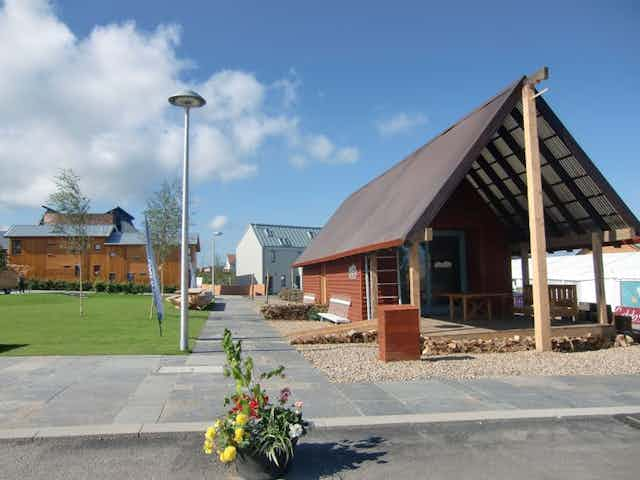Household energy use is a significant contributor to global carbon emissions. International policy is firmly moving towards technology-rich, low- and near-zero-energy homes. That is, buildings designed to reduce the need for additional heating, cooling and lighting. They use efficient or renewable energy technology to reduce the remaining energy use.
But what about the experiences of people who live in homes of this standard? Are these homes comfortable, easy to operate, and affordable? Do people feel confident using so-called smart energy technology designed for low energy use? What support systems do we need to help people live in low-energy, low-carbon houses?
We worked with other Australian and UK researchers to understand what it’s like to live in purpose-built low-energy housing. As part of this project, researchers from Sheffield Hallam University and the University of Salford in the UK visited South Australia to collect data from Lochiel Park Green Village, one of the world’s most valuable living laboratories of near-zero energy homes.
Lochiel Park’s 103 homes were built in the mid-2000s to achieve a minimum of 7.5 energy efficiency stars. They’re purpose-built to be a comfortable temperature year-round, and are packed with a solar photovoltaic system, solar hot water, a live feedback display to show households their energy use, plus a range of water- and energy-efficient appliances and equipment. Combined, these systems reduce both annual and peak energy demand, and supply much of that energy at a net zero-carbon impact.
To reciprocate, we spent several weeks investigating similar examples of niche low-energy housing developments in the Midlands and the North of England. We listened to the stories of people living in low energy homes, who experience the difference on a daily basis, and from season to season. They help us look beyond the dollars saved or percentage of emissions reduced; for them the impact of low-energy homes is personal.
This research provides new insights into the relationship between people, energy technologies and low-carbon buildings. For example, one elderly householder told us that moving into a dry and warm low-energy home allowed their grandchildren to come and stay, completely changing their life, and the life of their family.
Low-energy homes create a wide range of physical and mental changes. Several households spoke about health improvements from higher indoor air quality. Even the idea of living in a healthier and more environmentally sustainable home can prompt lifestyle changes – one woman in her mid-50s told us she gave up smoking after moving into her low-energy house because she felt her behaviour should match the building’s environmental design. She also shortened the length of her showers, reduced her food wastage, and lowered her transport use by visiting the supermarket less often.
Purpose-built low-energy homes also give economic empowerment to low-income households. One household told us that savings on energy bills let them afford annual family holidays, even overseas. This economic benefit matches our findings in other Australian examples.
As researchers, we might dismiss this as a macro-economic rebound effect, voiding many of the energy and environmental benefits. But to that household the result was a closer and stronger family unit, able to make the types of choices available to others in their community. The benefits in mental and physical wellbeing are real, and more important to that family than net carbon emission reductions.
Although international policy is firmly moving towards technology-rich, low-energy homes, our research shows that not all technology is user-friendly or easy to understand. For example, some households were frustrated by not knowing if their solar hot water system was efficiently using free solar energy, or just relying on gas or electric boosting. Design improvements with better user feedback will be critically important if we are to meet people’s real needs.
This research highlights the importance, in the transition to low-energy and low-carbon homes, of not forgetting the people themselves. Improving real quality of life should be the central focus of carbon-reducing housing policies.

